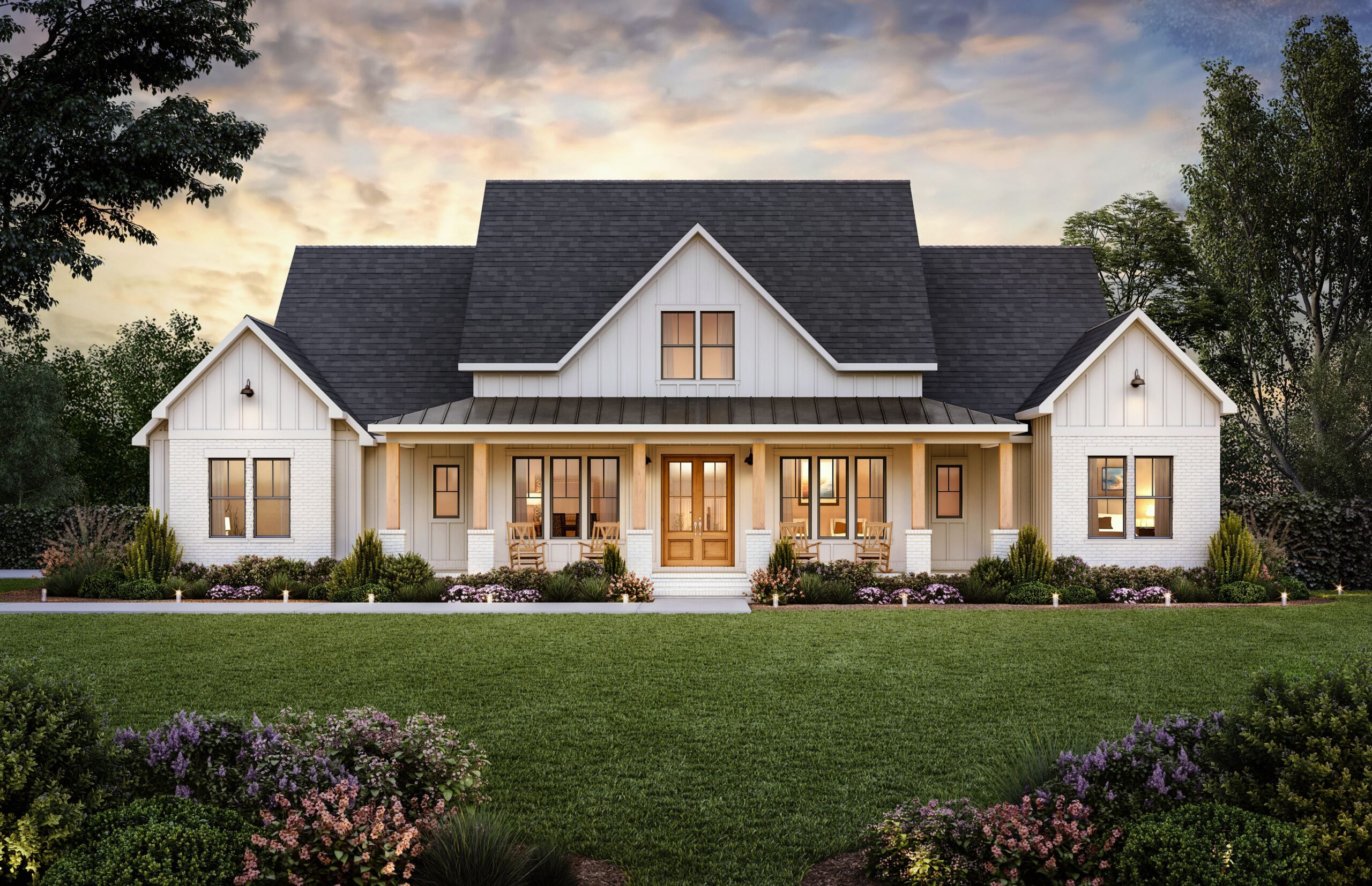Whether you’re looking to completely revamp your home or just make a few small changes, the world of home design is full of possibilities. With the right inspiration and a little creativity, you can transform any space into something truly special. This article will guide you through innovative ideas that will help you make the most of your space, whether you’re living in a cozy apartment or a spacious house. Let’s dive into the exciting world of home design and discover how you can bring your vision to life!
Understanding Your Space
Reporting from havenblueprint.com before you start any design project, it’s important to take a step back and really understand the space you’re working with. Each room has its own unique features and challenges, and understanding these can help you make the most of your design. Take note of the size, shape, and natural light of each room. Are there any architectural details that you want to highlight, like a beautiful fireplace or a stunning view? Or perhaps there are areas you want to downplay, such as awkward corners or low ceilings. Understanding these elements will help you create a space that is both functional and aesthetically pleasing.
Choosing a Design Style
Once you’ve assessed your space, it’s time to think about the overall style you want to achieve. Do you prefer the clean lines and neutral palette of modern design, or are you more drawn to the warmth and character of a rustic style? Maybe you like the elegance of traditional design, or the playful mix of colors and textures found in eclectic spaces. Choosing a design style will help guide your choices when it comes to furniture, colors, and accessories. Remember, your home should reflect your personal taste, so don’t be afraid to mix and match different styles to create a space that feels uniquely yours.
Maximizing Small Spaces
Living in a small space doesn’t mean you have to sacrifice style or functionality. In fact, small spaces often benefit the most from innovative design solutions. Consider multi-functional furniture, like a sofa that doubles as a guest bed, or a coffee table with hidden storage. Use light colors to make the space feel larger, and don’t be afraid to use mirrors to reflect light and create the illusion of more space. Vertical storage solutions, such as shelves and wall-mounted cabinets, can also help you make the most of every square inch.
Creating a Focal Point
Every room needs a focal point—something that draws the eye and anchors the space. This could be a piece of art, a beautiful piece of furniture, or even a stunning view. Once you’ve chosen your focal point, arrange the rest of the room around it to create a sense of harmony and balance. In a living room, for example, you might arrange your furniture around a fireplace or a large window. In a bedroom, the bed is usually the focal point, so choose bedding and accessories that complement it.
Incorporating Color
Color is one of the most powerful tools in your design toolkit. It can set the mood of a room, make a space feel larger or smaller, and even affect how you feel. If you’re unsure where to start, consider using a color wheel to find complementary colors that work well together. Neutral colors like white, gray, and beige are always a safe bet, but don’t be afraid to add a pop of color with accessories like pillows, rugs, and artwork. If you’re feeling bold, you can even paint an accent wall to add a splash of color to the room.
Lighting Matters
Lighting is often overlooked, but it’s a crucial element of any design. The right lighting can make a room feel warm and inviting, while the wrong lighting can make it feel cold and uninviting. Start with natural light—open up those curtains and let the sunlight in! Then, layer your lighting with a mix of ambient, task, and accent lighting. Ambient lighting provides general illumination, task lighting is for specific activities like reading or cooking, and accent lighting highlights specific features in the room, like a piece of art or an architectural detail.
Adding Texture
Texture is another important element that can add depth and interest to your design. Think about how different materials will feel and look in your space. Soft fabrics like velvet or wool can add warmth and coziness, while harder materials like metal or glass can add a touch of modern sophistication. You can also play with different patterns and finishes to create contrast and interest. For example, a rough wooden table paired with smooth leather chairs creates a dynamic and visually appealing contrast.
Personalizing Your Space
Your home is your sanctuary, so it should reflect who you are. Don’t be afraid to add personal touches that make the space feel uniquely yours. Display your favorite books, photos, or souvenirs from your travels. Incorporate artwork that speaks to you, whether it’s a piece you bought from a local artist or something you created yourself. These personal touches will make your space feel more like home and less like a showroom.
Bringing the Outdoors In
One of the latest trends in home design is bringing the outdoors in. Plants are a great way to add life and color to your space, and they can also improve air quality. If you don’t have a green thumb, consider low-maintenance options like succulents or snake plants. You can also bring in natural materials like wood, stone, or jute to create a connection to the outdoors. Even something as simple as a bowl of fresh fruit on the counter can add a touch of nature to your home.
Making the Most of Technology
Technology is playing an increasingly important role in home design. From smart lighting systems that you can control with your phone to voice-activated assistants that can play music or answer questions, there are countless ways to incorporate technology into your home. Consider installing a smart thermostat to save energy, or a security system that you can monitor from anywhere. These technological innovations not only make your home more convenient, but they can also add value to your property.
Keeping It Sustainable
Sustainability is more than just a buzzword—it’s an important consideration in modern home design. Look for furniture and accessories made from sustainable materials like reclaimed wood or recycled metal. Consider energy-efficient appliances and lighting to reduce your carbon footprint. You can also incorporate sustainable practices into your design by choosing durable materials that will last for years, reducing the need for frequent replacements. Not only will this help the environment, but it can also save you money in the long run.
Making a Statement with Art
Art is a great way to express your personality and add a unique touch to your space. Whether you prefer paintings, sculptures, or photography, art can be a focal point in any room. Consider creating a gallery wall with a collection of your favorite pieces, or showcasing a single large piece to make a bold statement. If you’re on a budget, look for prints or reproductions that offer the same visual impact at a fraction of the cost. The key is to choose pieces that resonate with you and complement the overall design of your space.
Focusing on Functionality
While aesthetics are important, functionality should never be overlooked. A beautifully designed space is of little use if it doesn’t meet your needs. When planning your design, think about how you will use each room and what furniture and accessories will best serve that purpose. In a kitchen, for example, you’ll want to prioritize storage and counter space, while in a living room, comfortable seating and good lighting might be more important. The goal is to create a space that not only looks great but also works well for your lifestyle.
Incorporating Vintage Pieces
Vintage pieces add character and charm to any space, and they can be a great way to add a unique touch to your design. Look for vintage furniture, lighting, or accessories at flea markets, antique shops, or online. These pieces can often be mixed with modern elements to create a look that is both timeless and contemporary. Don’t be afraid to mix different eras and styles—this can create a layered and interesting look that feels curated rather than cookie-cutter.
Creating Cozy Nooks
Everyone needs a space to relax and unwind, and creating a cozy nook can be the perfect solution. Whether it’s a reading corner in the living room, a window seat in the bedroom, or a small desk in the kitchen, a cozy nook is a great way to carve out a little bit of personal space in your home. Add soft textiles like cushions, throws, and rugs to make the space inviting, and don’t forget to include good lighting for reading or working. These small, cozy spaces can become your favorite spots in the house.
Playing with Scale
When it comes to design, scale is everything. A room with all small furniture can feel cluttered, while a room with all large furniture can feel overwhelming. The key is to mix different scales to create a balanced and harmonious space. For example, pair a large sofa with smaller side tables, or a big dining table with slender chairs. This creates a dynamic look that is visually interesting and comfortable to live in. Don’t be afraid to experiment with scale to find the right balance for your space.







Leave a Comment